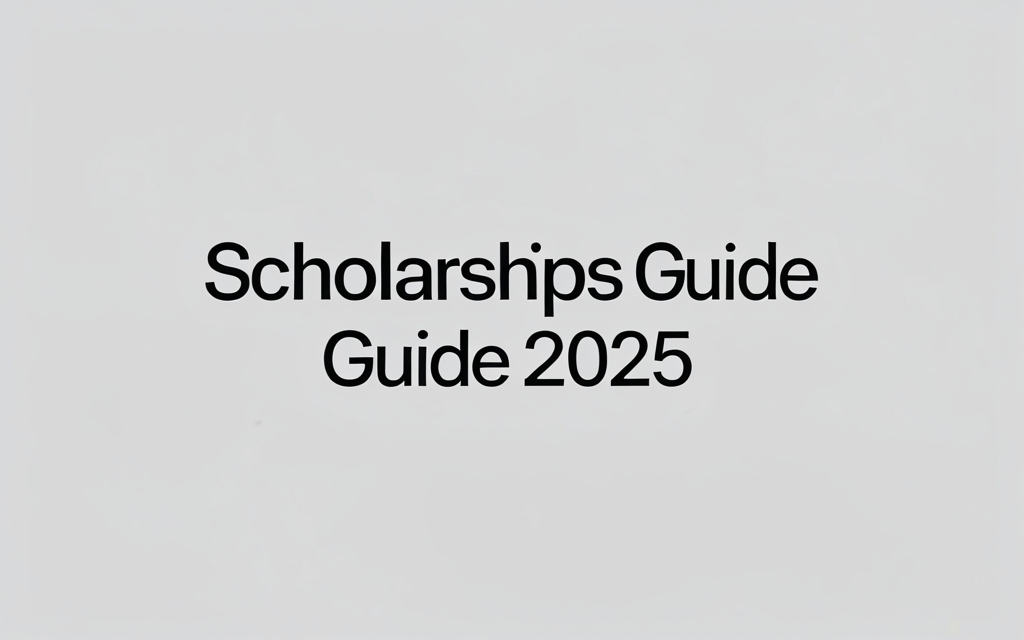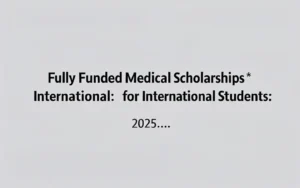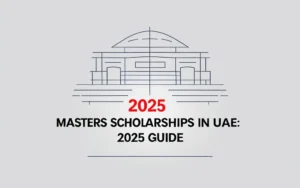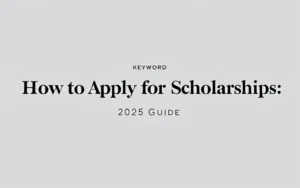Scholarships Guide 2025
Securing scholarships is one of the most effective ways to fund your college education and minimize debt. Whether you’re an international student or a domestic applicant, understanding the landscape of financial aid, key deadlines, and application strategies can make all the difference. In this comprehensive Scholarships Guide 2025, we’ll explore current data, emerging trends, expert insights, and actionable tips to help you navigate the scholarship process with confidence.
Table of Contents
- Current Data and Statistics on Scholarships and Financial Aid (2025)
- Federal Pell Grant
- Overall Financial Aid Landscape
- Generous University Scholarships
- Recent Developments and Trends in Scholarships (2025)
- Expert Opinions and Industry Insights
- Best Practices and Actionable Advice for Scholarship Seekers
- Conclusion
Current Data and Statistics on Scholarships and Financial Aid (2025)
Federal Pell Grant
The Federal Pell Grant remains a cornerstone of need-based aid for low-income undergraduates. For the 2025-2026 academic year, the maximum award is $7,395, unchanged from last year. In 2022, the average Pell Grant was $4,511, illustrating how grant coverage has not kept pace with rising tuition costs. Approximately 39% of all college students received Pell Grants in 2022, with around 6.1 million annual recipients since 2020. States such as New York, Mississippi, and New Jersey lead in average award amounts. Interestingly, about 27% of recipients also financially support dependents.(BestColleges Pell Grant Data)
Overall Financial Aid Landscape
Undergraduates in the 2023-2024 cycle received an average of $16,360 in total aid, including grants, scholarships, loans, and work-study. Of this, $11,610 came in grants and scholarships, while federal loans averaged $3,900 per student. Total federal student aid reached a record $256.7 billion in 2023-2024. FAFSA completion remains critical: only about 43% of the class of 2024 completed applications, leaving many students underfunded. Additionally, roughly half of bachelor’s degree recipients graduate with debt, averaging $29,300 in loans. California and Texas lead FAFSA filings for 2025-2026, with over 1.4 million and 967,000 applications processed respectively.(Bankrate FAFSA Statistics)
Generous University Scholarships
Elite institutions are setting benchmarks for aid. Harvard University meets 100% of demonstrated financial need without loans, offering an average grant of $64,942. Seventy-two percent of undergrads receive aid, and families under $100,000 pay nothing. Amherst College follows closely, with an average grant of $65,623; 65% of students receive aid and over 75% graduate debt-free. These colleges combine grants, scholarships, and work-study to minimize student borrowing.(BestColleges Generous Aid Report)
Recent Developments and Trends in Scholarships (2025)
- Rising Costs vs. Static Grants: Tuition continues to outpace Pell Grants and federal aid, widening the funding gap and underscoring the need for external scholarships.
- FAFSA’s Central Role: FAFSA remains the entry point for most federal and state aid. Outreach and simplified forms aim to boost completion rates.(ApplyBoard Trends Report 2025)
- Need-Blind and No-Loan Policies: More universities adopt policies to meet full demonstrated need without loans, reducing student debt burdens.
- Targeted Scholarships: Growth in awards for underrepresented groups, including first-generation students, minorities, and low-income families, often via partnerships like QuestBridge.
- Year-Round Scholarship Planning: Students increasingly treat scholarship applications as a strategic, continuous process rather than a one-time fling.(Fastweb Scholarship Guide)
Expert Opinions and Industry Insights
- Early FAFSA Completion: Advisors stress that early applicants access first-come, first-served funds, maximizing award potential.
- Diversify Applications: Experts recommend applying to a mix of local, institutional, and private scholarships to improve odds.
- Debt Reduction Focus: The student debt crisis has fueled advocacy for more grant-based aid and reduced loan reliance.
- Net Price Awareness: High sticker prices don’t always translate to high net costs—use net price calculators to compare institutions.
Best Practices and Actionable Advice for Scholarship Seekers
- Start Early: Research scholarships and complete FAFSA in the fall before you enroll. Early planning helps you avoid last-minute stress and missed deadlines.
- Use Scholarship Search Engines: Platforms like Fastweb, Scholarships.com, and College Board’s Big Future provide curated lists. Explore our scholarship search tools to stay organized.
- Customize Every Application: Tailor essays, resumes, and recommendations to each award’s criteria. Highlight leadership, community service, or unique talents.
- Build a Strong Profile: Maintain high academic performance, engage in extracurriculars, and secure solid letters of recommendation.
- Apply Broadly: Cast a wide net—local scholarships often have fewer applicants, increasing your chances of success.
- Leverage Institutional Aid: Research universities with generous need-based or merit-based scholarships. Check out our list of top scholarship universities.
Conclusion
Securing scholarships in 2025 requires strategic planning, early action, and a diversified approach to applications. By leveraging federal grants like the Pell Grant, tapping into generous institutional aid, and following expert-backed best practices, you can significantly reduce your college expenses and graduate with less debt. Start your scholarship journey today—complete your FAFSA, curate a list of awards, and craft compelling applications.
Call to Action: Don’t wait—apply for FAFSA by the upcoming deadline and explore thousands of scholarship opportunities now. Visit our Financial Aid Resource Center for step-by-step guides, tools, and expert support to help you secure the funding you deserve.






